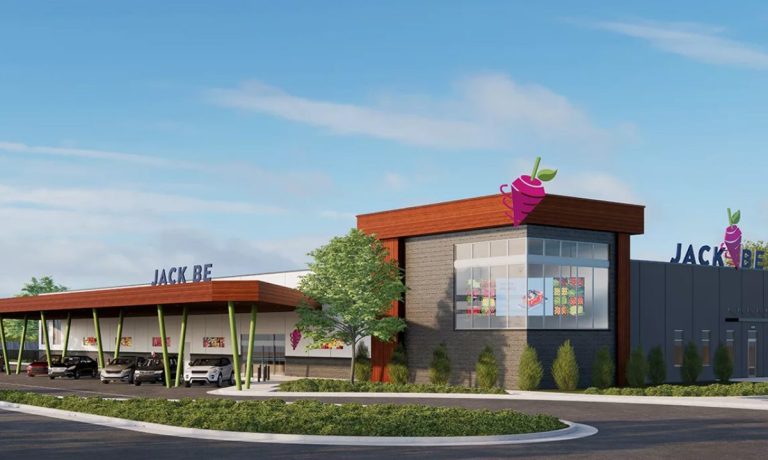
One of the first curbside-only grocery stores in the United States has opened its digital doors.
On Tuesday (Jan. 10), JackBe, a retailer that describes itself as a “curbside drive-thru grocer,” opened in Oklahoma City, the company announced on its Instagram.
While most grocers offer an array of digital shopping features, they are all tied into a traditional physical supermarket. In contrast, JackBe shoppers can only place their orders via the grocer’s mobile app, then proceed to a pre-assigned drive-thru bay once their order is ready to be loaded into their car by a store associate.
With this digital-only model, the physical location serves as a fulfillment center rather than a consumer-facing store with browsable aisles. Additionally, the grocer promises no substitutions to differentiate its offerings from other eCommerce options. According to Supermarket News, this location is the first of three to open in 2023.
“By opening JackBe, we’re introducing a new way for customers to shop,” JackBe co-founder and CEO Alex Ruhter told the outlet.
Indeed, this mobile-only retail outlet marks the latest supermarket evolution, with the grocer joining the ranks of an emerging new trend. In October, British food delivery company Deliveroo opened a physical grocery store in Central London in partnership with Morrisons, the U.K.’s fourth-largest grocer, offering pickup for online orders.
The store features digital kiosks to place orders to be brought to customers by in-store pickers, and purchases can also be made via the Deliveroo app for order-ahead pickup or delivery.
“Our New Oxford Street store promises a new way to shop for Deliveroo customers, giving them even greater” choice, Chief Operating Officer Eric French said in a statement at the time.
Between these two digital-only options, with the United States grocer’s vast parking lot and the United Kingdom one’s location in a dense, urban area, new possibilities are emerging for what the grocery store can look like.
Grocers are taking a tip from restaurants, which over the past few years, have been increasingly turning to off-premise-centric or off-premise-only locations to capture the digital ordering boom and create an operating model with less overhead.
For grocers, digital service can be more labor-intensive, given that usually, it would be consumers doing the work of picking items off the shelves and assembling their orders. However, as long as they charge a premium for that convenience, grocers can run a more streamlined digital business when freed from the inefficiencies of the traditional store experience.
Other grocers are running other, less revolutionary experiments with regard to store formats — for instance, opening smaller convenience store locations.
Indeed, the demand for eGrocery convenience is there. Research from the November/December edition of PYMNTS’ ConnectedEconomy™ study, “ConnectedEconomy™ Monthly Report: The Gender Divide Edition,” for which PYMNTS surveyed more than 2,600 U.S. consumers, found that 45% of men and 36% of women purchase groceries online for curbside pickup. Similarly, 43% of men and 30% of women do so for in-store pickup.
Even when consumers are growing more conservative in their spending, eGrocery adoption continues to rise, as suggested by Albertsons Companies’ 33% year-over-year digital sales growth, reported Tuesday.
As the rise of online grocery continues to inform the sector on how shoppers get their food, we will likely see more experimentation with formats in the year ahead, with new formats informed by the digital shift.